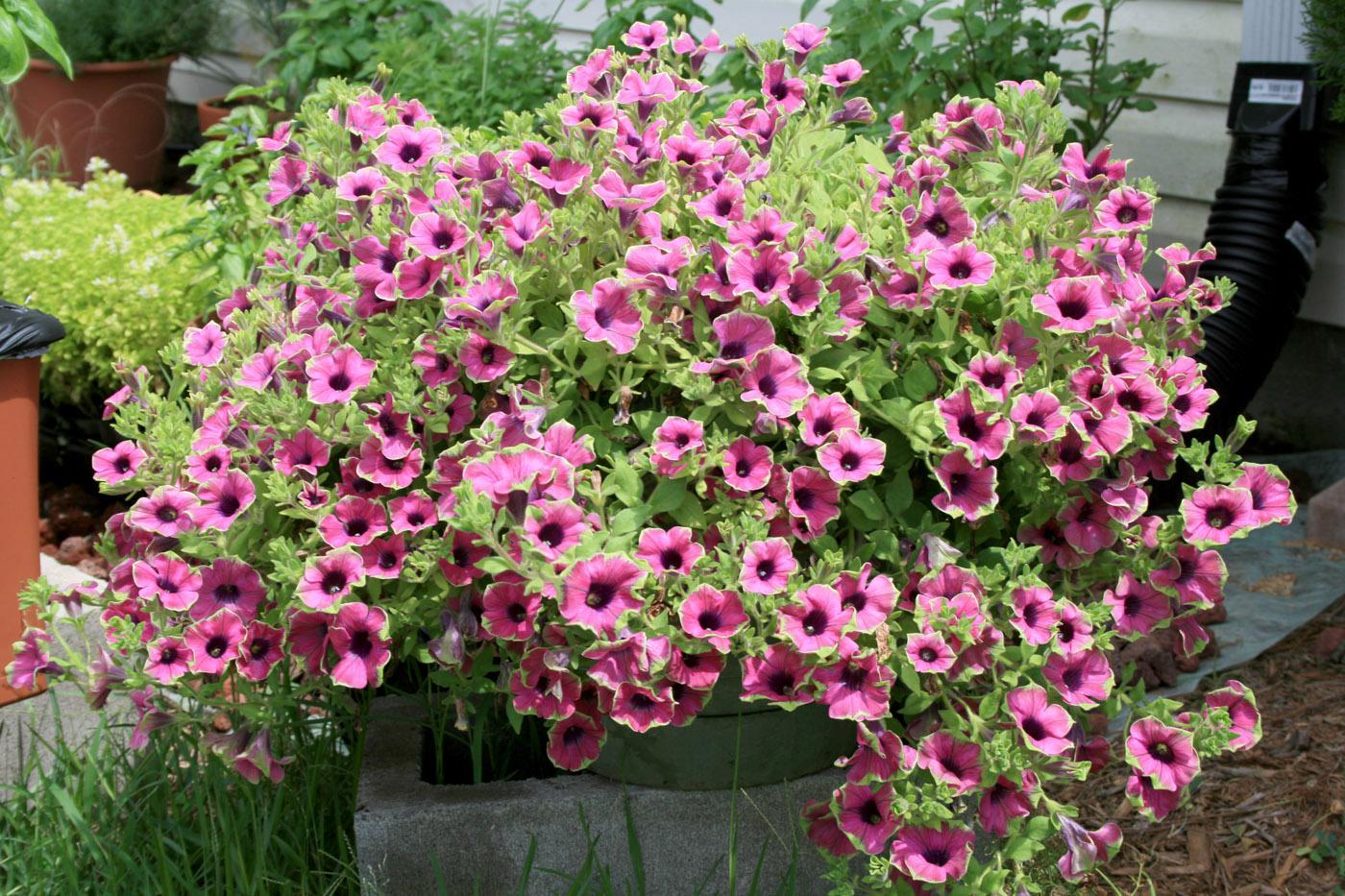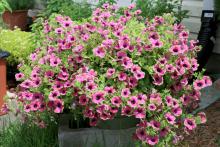Information Possibly Outdated
The information presented on this page was originally released on January 20, 2011. It may not be outdated, but please search our site for more current information. If you plan to quote or reference this information in a publication, please check with the Extension specialist or author before proceeding.
Use good potting mix for great containers
Shopping at the local garden center for potting mix for container plants can be confusing. A bag that simply says “garden soil” can have anything in it. While this may work for in-ground plants, plants in containers require a totally different kind of mix.
Bagged mixes for container plants are often called potting or container mixes. These mixes actually contain no soil at all. They are sold under a variety of trade names and are similar in their basic recipe.
Potting mixes are composed of organic components like peat moss, coir fiber, or bark. They often contain vermiculite or perlite, both inorganic components produced by heating mica or pumice. Vermiculite and perlite allow potting mixes to be light and airy and drain well.
All potting mixes provide air, water, nutrition and support, the four requirements of plant roots. The basic potting mix recipe can change depending on the type of plant grown.
Succulent plants and herbs generally prefer a coarse-textured mix that doesn’t hold much moisture. Foliage and tropical plants generally like a finer-textured, well-drained mix that holds a little more water. There are even certified organic potting mixes.
Some bagged potting mixes retain water and help lower water usage. Resin or a similar material is added to increase water retention.
Many potting mixes have some fertilizer mixed in. This is perfect for getting your plants off to a fantastic start, but is not enough to sustain growth through the year. You will have to add supplemental fertilizer as needed.
Moisten any bagged potting mix before using it. You can pour the potting mix into a tub and add some water, but I like just to add the water directly into the bag. After a couple of hours, the mix is ready to use.
Fluff the potting mix a little before filling any containers. Leave about 1 inch between the mix and the top of the pot. This will make watering easier. Never press the potting mix after planting; it will settle naturally when you water.
Large containers can be expensive to fill with commercial mixes. You can address this problem by adding filler to take up space, which reduces the weight and the amount of mix needed. Aluminum cans, non-degradable Styrofoam packing peanuts or even shards of broken terra cotta pots work very well.
Fill the bottom one-third of the pot with filler, then lay a piece of landscape fabric on top and fill the remaining space with mix. The landscape fabric keeps the mix from filling in the filler material. Any time you remove a plant, you can reuse its potting mix if there were no serious disease issues.
When growing plants in containers, you don’t have to use a commercial mix. If you want try your hand at making potting mix, try this recipe: 70 percent peat moss or coir fiber and 30 percent vermiculite and/or perlite. Adjust to fit your plant-growing needs.
But remember, commercial bagged potting mixes are engineered so you can be a successful container gardener.








